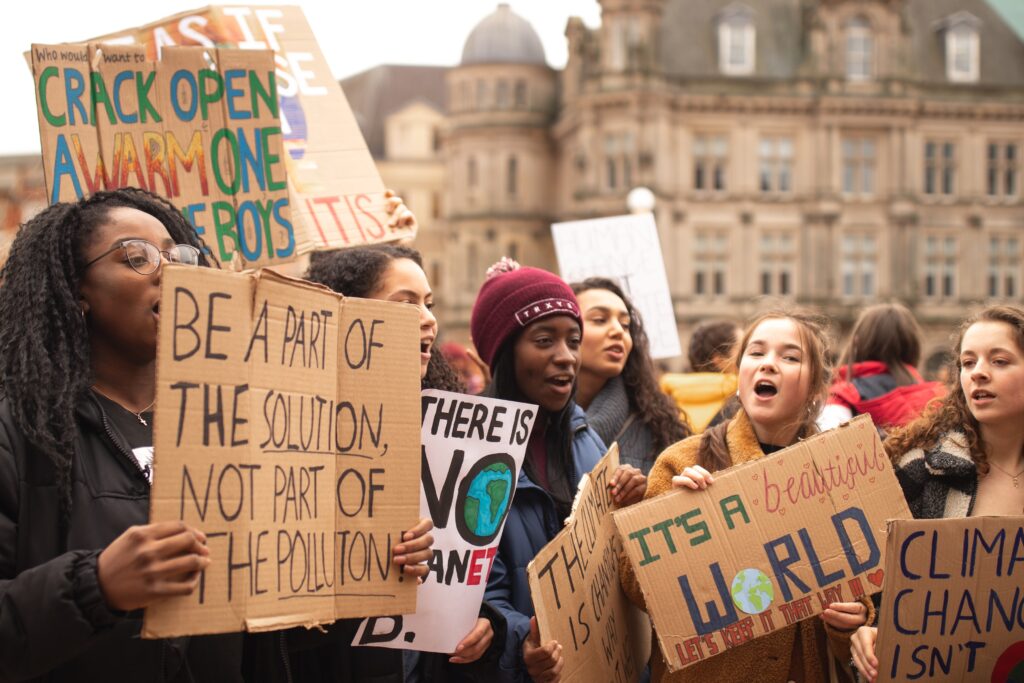COP27 in Sharm El-Sheikh, Egypt is getting a lot of attention as one of the last hopes to produce meaningful change in response to climate change. But, while COP meetings have produced some landmark agreements on climate change, such as the Kyoto Protocol in 1997 and Paris Agreement in 2015, they have largely failed to produce meaningful reductions in climate-forcing emissions. Unfortunately, COP27 is looking to be no exception.
As a result, other governments have tried to pick up the slack. Smaller-scale international agreements and unions have tried to lower emissions among their members. National governments have made unilateral emissions reduction promises. But, what has so far been the most effective actor in combating climate change is one often overlooked in international politics: the city.
Cities have implemented the strongest programs to combat climate change by far. Organizations like the C40 Cities Climate Leadership Group share knowledge on best practices to build more sustainable cities. City politicians have especially gotten involved in climate policy and activism. From Eric Garcetti of Los Angeles to Artur Harutyunyan of tiny Tsaghkadzor, mayors have run and won on climate initiatives. As a result of these promises, individual cities have taken strong measures to reduce climate-forcing emissions, with cities like Los Angeles adopting novel greenhouse gas recapture technologies and Delhi trying to “leapfrog” polluting technologies as they grow at a rapid pace.
The international community has noticed these efforts and has tried to leverage them to solve climate change without wasting time developing complicated international agreements. COP26 focused on how cities could mitigate climate change. This focus is continuing in COP27, as global leaders have realized that cities are the most effective arenas for implementing climate policy.
However, are cities really powerful enough to stop climate change? While 56% of people live in cities, and 80% of GDP is generated in cities worldwide, they also occupy a tiny fraction of the Earth’s land area. Cities also source most of their resources from the surrounding rural areas, so it’s difficult for a city to manage its environmental impacts. Cities are also numerous and diverse; if not enough cities choose to take climate change seriously, then they’ll be just as ineffective as national governments.
With all these problems in mind, should the focus of giant international conferences like COP27 continue to be on cities?
The pros of city-based climate policy
Despite their geographic limitations, cities can do the hard work of implementing cleaner technologies and cleaning up damage — something national governments rarely accomplish. Even when a national government takes on an environmental initiative, it usually falls on some form of local government to implement the central government’s plans. By taking the lead, cities can bypass this delegation and implement programs directly, reducing administrative costs and leading to a more agile policy.
One example of this is San Jose, California’s building decarbonization strategy. The U.S. government has developed national strategies to decarbonize buildings, but most of these are vague and don’t consider local needs. San Jose has taken the lead in building decarbonization in the United States. This is largely thanks to outreach and funding models that consider the needs of San Jose’s large working class Hispanic and Vietnamese populations.
Cities are also much more politically agile and unified. Even residents of particularly diverse cities like London, São Paulo and Singapore often share common goals and ideals regarding local policy. Thus, cities can often develop and implement projects much more quickly and effectively than the central government can. In New Zealand, Auckland was a pioneer in setting up an urban growth limit to manage sprawl and prevent its disastrous climate and environmental effects, enacting one in 1951. While considered broadly successful, it took until this year for the New Zealand central government to implement such a policy on a national level.
While much focus is still on mitigation, adaptation to a changing climate is an important step in addressing climate change’s impacts. Adaptation to climate change must be made almost entirely at the local level. Things like urban greening, cooler roofs and buildings, and cooling and warming centers must be implemented at the local level.
The cons of city-based climate policy
With all these advantages, working with the city rather than the national government could be key to solving climate change. This is the popular stance from the negotiators at COP 27 to local environmentalists. However, neglecting international diplomacy as a way to solve climate change could produce disastrous results.
The critical thing which cities lack is coordination. While organizations like the International Council for Local Environmental Initiatives (ICLEI) have arisen to coordinate municipal policy on climate change, these efforts have yet to successfully create meaningful international cooperation. This is because there are too many cities with too many unique situations to make cooperation possible.
While city climate planning is often successful, it often produces no meaningful worldwide results. While climate planning is successful in dedicated cities in which climate change is a real priority, too many cities, even those party to international climate cooperation agreements with other cities, fail to meet their goals. From Portland, Oregon failing to reduce its transportation emissions to Copenhagen giving up on its net-zero promise, the problem occurs everywhere. This is primarily a consequence of how many cities there are that need to respond to climate change. Many cities have other priorities, and most cities have little bargaining power to compel other cities to stick to their agreements.
While COP26 and past failures to address climate change demonstrate the difficulty of international cooperation, it’s at least easier to get about 200 countries to cooperate than thousands of cities. National governments also have a lot more power to punish other national governments and their cities if they fail to uphold their end of the deal. Let’s not forget: repeated interaction between countries has shown progress. After all, we didn’t get the Paris Agreement until COP21.
Finding a balance
Both international and municipal climate policies will be important sites for action if we want to keep climate change down to manageable levels. City policy may be one of the most effective ways to lower climate-forcing emissions.
While cities might only be able to take small steps to mitigate climate change, they are still an important locus of action for the millions who live in them. Cities are needed to implement climate policy on the ground and adapt it to be best suited for the local environment. Cities have the tools needed to implement effective and equitable climate solutions.
However, cities can’t do it alone. They need the support of their national governments and international agreements to achieve meaningful changes which won’t just be wiped away by other irresponsible actors. The focus on cities at COP27 is necessary to implement solutions, but cities need the international community’s backing to truly solve the problem.







